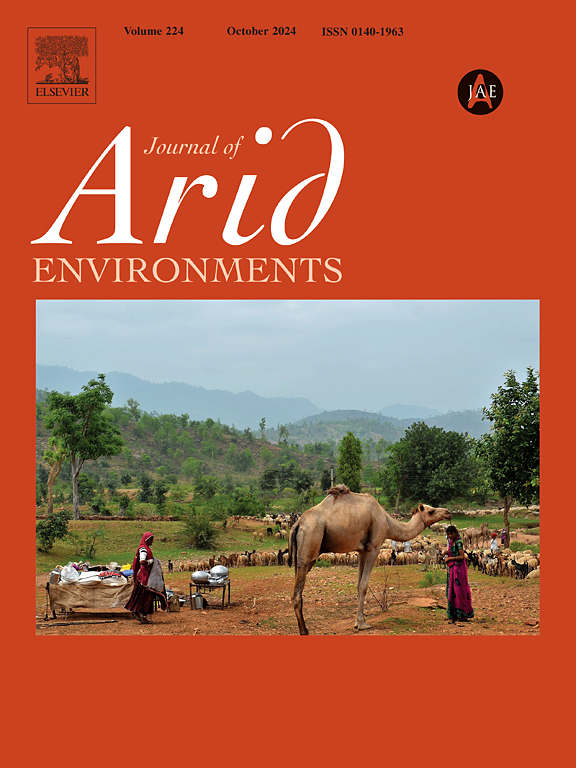Village aliens: Self-seeding of indigenous and non-indigenous woody garden plants in a small desert village
IF 2.6
3区 环境科学与生态学
Q2 ECOLOGY
引用次数: 0
Abstract
Garden plantings in rural villages can affect surrounding natural habitats if non-indigenous and extralimital plant species escape the gardens through dispersal and establishment. Escape from gardens initially occurs via self-seeding. We surveyed woody plant species in roadside gardens in the village of Prince Albert in the arid Karoo region of South Africa to establish which species were being planted and which were self-seeding. We classified plants by origin (non-indigenous, extralimital and locally indigenous and by dispersal structure and recorded microsites where seedlings occurred. Non-indigenous species dominated garden plantings (62% of 1081 individuals and 65% of 92 species) and included 30 legally regulated invasive species. Most (75%) non-indigenous species self-seeded, however 70% of self-seeded individuals were extralimital or locally indigenous species. The best predictor of self-seeding was planting intensity. Self-seeding occurred where supplementary water was available, and seedling density was greater in covered than open sites. Self-seeding did not differ between species with dry and fleshy fruits. The extralimital species Searsia pendulina was a prolific self-seeder and has potential to become invasive. Nurseries should promote locally indigenous plants or extra-limital species that do not self-seed, to reduce the risk of invasions into natural rangeland and riparian areas surrounding villages. [198 words]
外来村落:在一个沙漠小村庄里,自种原生和非原生木本园林植物
如果非本地和外来植物物种通过扩散和建立而逃离花园,则乡村花园的种植会影响周围的自然栖息地。逃离花园最初是通过自我播种。我们调查了南非干旱卡鲁地区阿尔伯特王子村路边花园的木本植物物种,以确定哪些物种是被种植的,哪些是自播的。我们根据原产地(非本地、外来和本地)和分布结构对植物进行分类,并记录了幼苗发生的微点。非本地物种占主导地位(1081株占62%,92种占65%),包括30种合法管制的入侵物种。大多数(75%)非本地种是自种子,而70%的自种子个体是外来种或本地种。自播的最佳预测因子是播种强度。在有补充水分的地方可以自播,有盖地的幼苗密度大于露天地。在干果和肉质果的种间,自结种子没有差别。海雀属是一种高产的自种植物,具有入侵的潜力。苗圃应推广本地植物或不自结种子的极限物种,以减少入侵自然牧场和村庄周围河岸地区的风险。(198字)
本文章由计算机程序翻译,如有差异,请以英文原文为准。
求助全文
约1分钟内获得全文
求助全文
来源期刊

Journal of Arid Environments
环境科学-环境科学
CiteScore
5.70
自引率
3.70%
发文量
144
审稿时长
55 days
期刊介绍:
The Journal of Arid Environments is an international journal publishing original scientific and technical research articles on physical, biological and cultural aspects of arid, semi-arid, and desert environments. As a forum of multi-disciplinary and interdisciplinary dialogue it addresses research on all aspects of arid environments and their past, present and future use.
 求助内容:
求助内容: 应助结果提醒方式:
应助结果提醒方式:


